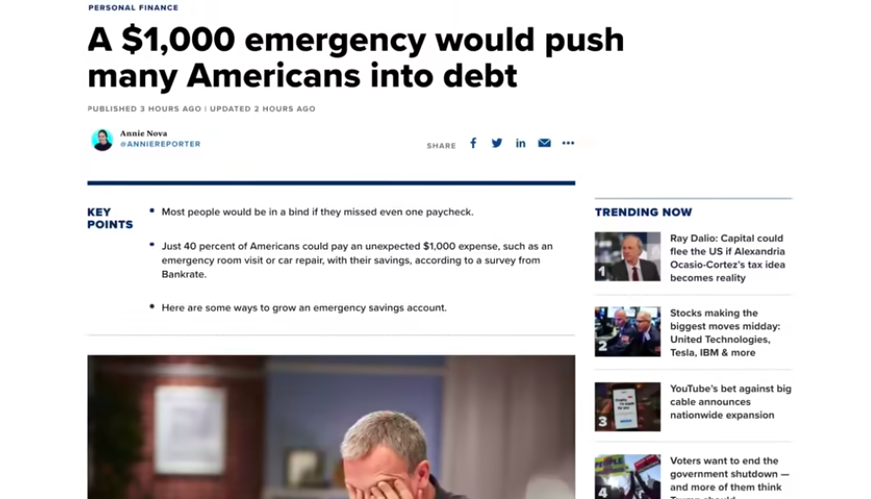
Step one: Having a budget by tracking your expenses and reducing unnecessary spending.
If you just do this single step, you’ll be ahead of 99%. From doing this, you can determine if you’re spending money on things that don’t matter, if you’re making impulse purchases, or if you’re just otherwise wasting money without even realizing it. When you do this, you will find a way to reduce spending without missing anything…you can likely save about 10% of your income just by tracking your expenses, and then reducing spending on the things you don’t even realize.
Step Two: Creating a Rainy Day Fund.
Every single wealthy person I know has a rainy day fund of AT LEAST 3-6 months worth of expenses. This means that you already know, from tracking your expenses, how much you need to spend every month to live…now save up 3-6 times that amount, in cash. You do not spend this money, EVER, unless you absolutely need to.
Step Three: Take advantage of employer sponsored retirement plan matching.
This means that if your employer offers a 401k match…ALWAYS TAKE IT. THIS IS FREE, GUARANTEED MONEY. There is no other investment in the history of the world that will give you a risk free, guaranteed 100% return on your money like an employer match. And if you’re self employed, you can make your own employer contributions with a SEP 401K…google that, because that’s a great way to reduce your taxes.
Step Four: Pay off high interest rate debt.
This means that if you have any outstanding debt over a 5% interest rate, begin PAYING THIS OFF NOW after you have your rainy day fund, and after you’ve got your free employer match. When it comes to paying off debt, there are two strategies to go about this:
The first is called the avalanche method, and mathematically, this should leave you with the most money left over as possible. This means you should start paying off the highest interest rate debt you have first, and then once that’s paid off, you to go the next highest interest rate…until it’s all paid off.
The second method is the Dave Ramsey approach, and that’s called the snowball method. This means you pay off the smallest balance, first, regardless of interest rates, and then move up to the next largest balance…and the next largest, until you leave the biggest balance for last. The downside, of course, is that you likely end up paying more money in interest and that costs you more in the long run – but if doing this means you pay off debt, I’m all for it. As long as long as you pay off high interest debt.
Step Five: Invest in yourself.
This could be buying books, this could be learning a new skill, this could be investing back into your business…self education, in my opinion, is absolutely vital at this stage. If you’re in a position RIGHT NOW where you’ve already done as much as you can, and you don’t have any money left over after doing all of this..then there’s no way around it, you’ve gotta work to increase your income.
Step Six: Invest in a Roth IRA.
This is an account that allows you to invest your after-tax money, and when you’re 60, all the profit you make in that account is completely TAX FREE…this means that you can get decades of investment growth and compound interest working on your side that you don’t have to pay tax on. And when it comes to growing your wealth, having this available to you is absolutely priceless…watch this:
https://youtu.be/z-53ZTJmDUA
Step Seven: Invest in Taxable Accounts / Anything Else.
This means that you have your brokerage account where you just trade stocks in, maybe you buy some real estate, maybe you spend some money starting a business…from this point on, it’s really about just doing what you can to increase your income even further and build up your net worth.
The hardest part about doing all of this, and managing your money like the 1%, is just starting. And it all starts right here, at step number one.
